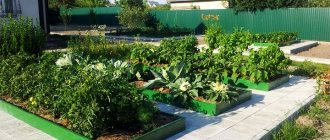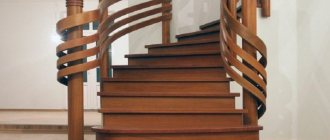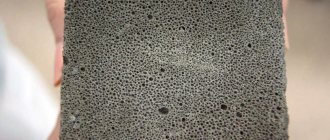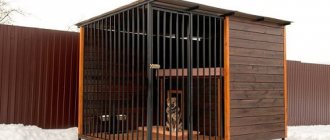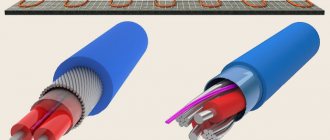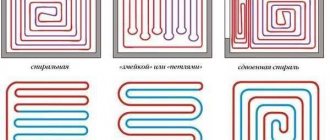The use of concrete flowerpots belongs to the palace traditions of park art. The summer residences in which high society lived were unthinkable without amazing alleys, and the alleys themselves were unthinkable without large concrete bowls in the Empire or Baroque style.
So, slowly moving from one century to another, flowerpots turned out to be in demand today, having received a permanent place of residence in city gardens and parks, at the front entrances of houses. Designers love them: flowerpots can be used to highlight the greenery and decorate the space of the site. Let's consider options on how to build a bowl, vase or flowerpot with your own hands.
↑ Current trends in landscape
Concrete flowerpots add a special presentability to the owners of a garden, cottage or estate.
Flower bowls both decorate the area and perform the function of a flower garden: they house both floral and decorative crops.
Both annual and perennial plants are planted in flowerpots.
Trends in decorating local areas dictate to home garden owners that bowls and flowerpots be made from materials that closely resemble natural ones.
Decorating cottages and courtyards from natural stone is not an easy and expensive job. It has become practical to use ordinary concrete and cement mortar to create flower arrangements.
Designers consider concrete vases not only original, but also functional. With the help of volumetric bowls you can:
- Create a special aura on the site.
- Concrete vases can be used to zone a space, collecting its details into the overall picture.
Massive flowerpots are actively used by decorators in private plots, parks, at the entrance to cultural institutions, and in administrative buildings.
Concrete bowls have many advantages that make them popular:
- vases are affordable, their construction or purchase will not break the budget;
- concrete is not afraid of moisture, frost, flame, it is quite durable;
- availability of bowls (vases, etc.) for the implementation of all kinds of ideas: vases can take on any, the most bizarre shape;
- environmental friendliness and mobility: green spaces grow well in such vases; for capricious plants, you can choose an exclusive area for mounting the bowl;
- outdoor vases can be created in the style that the customer prefers;
- Concrete is easy to paint and can be finished, so flowerpots can be decorated in any color scheme.
↑ Shapes and sizes
Concrete is flexible, so the bowl is easy to shape. It is important that the created design is combined with the overall style of the dacha or garden plot. For example, like this:
- English style. Concrete products are endowed with smooth, curved ornate contours, where there is no room for sharp or right angles.
- Rustic country style. At first it may seem that the bowls and flowerpots are somehow tasteless and made with carelessness. The products are made in a cylindrical shape, which resembles a bucket, basin, tub, tub.
- Moorish style. Square-shaped models are installed, and less often round products are installed. The outside of the Moorish-style bowls is lined with Arabic mosaics (pieces of glass, bugles, etc. are used).
- Classic style. Vases, along with a sculpture and an artificial waterfall, are located in the center of the composition. Concrete products are made in different versions. Standard models have a perfectly round base with a bowl on its leg.
The selection of pot size is influenced by a number of factors. Consider its purpose. Based on the functions of the vase, all products are divided into indoor, decorative and outdoor. Decorative and outdoor options are characterized by large bowls and flowerpots.
For outdoor products, the area of a summer cottage or garden plot is also important. In a small courtyard, a huge bowl of flowers will be inappropriate, and, conversely, in a vast area, small vases will be invisible.
The shape and size of vases are not limited by anything except the tastes of the owners. Products that are produced on industrial conveyors are made according to the standard: the bowls are equipped with a reinforced concrete frame, base, and sometimes a leg. The height of the products usually reaches 60 centimeters. With your own hands, of course, you can make a vase of a more original shape and the required size.
For planting flowers and ornamental crops, concrete vases are given substantial depth. Any form can be specified: the concrete solution accepts the parameters that are determined for it. I like the hexagonal bowl - everything is doable, you just need to construct the frame of such a bowl from wood, cardboard or plywood in advance.
Rectangular and square flowerpots are practical and original. Round large bowls look elegant and beautiful on the site.
Unusual concrete products involve the use of bowls, basins, boxes, even bowling balls as filling. To make a product from concrete mortar, you will need two forms: one - internal, the second - external. They must be different in size so that concrete can be poured between them.
When the solution hardens, the inner frame is removed or carefully broken.
Once again! When deciding what size to make a bowl with your own hands, determine the place where you will install it. There is no need to plan a huge vase for a small area with already growing flowers: all harmony will be disrupted. But even a made vase the size of a plastic bottle will simply get lost if you place it in an area where tall flowers are planted.
Show your talent as a landscape designer and make a vase that will be in harmony with the surrounding buildings and green spaces.
Silicate blocks
You can make your own flowerpots from hollow building blocks. They look unusual and fit well into a high-tech garden. When creating them, carefully consider the shape of the structure. It must be sustainable and fit well with the external environment. A sketch prepared in advance will greatly facilitate production.
Hollow building blocks
You will need:
- blocks;
- glue;
- plastic or wooden base.
Manufacturing process:
- Cut the plastic or wood base to fit the bottom of the block. Attach it to the bottom with glue. Do this with all modules that are intended for the tier bordering the ground.
- According to a pre-prepared sketch, connect the blocks to each other with glue, starting from the bottom layer.
- Fill the empty containers with a drainage layer, soil, and plant the plants.
↑ Making a flowerpot. Master Class
Everything will depend on how big the flowerpot you want to make. Let's look at a specific example.
- If the product is large, you will need a plastic mold with a diameter of 53 cm and a height of 23 cm. White cement, perlite (agroperlite), and peat are used for the solution. The proportions are 2:1:2. A 1.5 liter ladle can be used as a measuring container.
- It is necessary to dilute the mixture with water to obtain a thick mass. The flowerpot is heavy, so it must be made in the place where the bowl is supposed to be installed.
- It is worth preparing a plastic mold (internal).
- You need to put a 5 cm layer of solution on the bottom. A regular toothpick is suitable for measurements.
- To give the structure strength, you need to provide a wire frame. Since the container is large, at least four batches of cement will be needed.
- The plastic pot should be wrapped in cellophane and then inserted into the first (large) mold. All folds are carefully straightened. The solution is laid around the plastic pot.
- It will take at least 8 days for such a bulky container to dry completely.
Then the flowerpot is pulled out of the mold and cleaned with a brush. After this, the vase is washed and dried thoroughly. Next, the product is wrapped in cloth or damp burlap and left to harden further. When the material becomes light, this will mean that the bowl can be used.
↑ How to create a concrete flower girl
You can make your own compact flower box that will decorate your garden. To do this you will need cement mortar and a regular rag. You need to do this:
- You will need fabric. To do this, you can use thick material or old towels. An unnecessary bucket is quite suitable for the initial form. It is important to wear gloves on your hands.
- The consistency of the cement should be creamy. It is necessary to turn the bucket over and cover it with polyethylene. If this is not done, you will not be able to remove the finished product.
- A rag or towel should be dipped into a container with the prepared solution until completely saturated. After this, the towel in the solution is taken out and straightened.
- Place a towel soaked in cement on the bucket, which has been inverted in advance, and smooth the bottom well. The bottom of the bucket will then be the bottom of the finished vase. In this case, the folds can hang freely. If desired, they can be given any shape.
Fabric impregnated with cement must dry for 48 hours. Then you need to remove the bucket from under the finished flowerpot. The flower girl can be exploited.
DIY crafts made from sea pebbles for the garden - photo
Many other wonderful crafts can be made from large and small sea pebbles that will decorate the dacha area. These are all kinds of ladybugs, mushrooms, frogs, and many other characters and attributes with which you can decorate flower beds, ponds and country paths.
Elvira Goleva for DecorWind.ru
↑ What is needed for a universal flowerpot
We list all the material that will be needed to create a universal flowerpot:
- Concrete. An excellent solution is to purchase the mixture ready-made in the store.
- Molds and molds. It's worth imagining. You can’t just focus on certain standards. The main requirement is that the shape must be comfortable so that the product can be easily taken out of it. You can use different containers: packs of cardboard, cups, all kinds of glass containers, basins, jugs.
- Non-stick spray. Concrete containers will be easier to remove if treated with a spray before pouring. Motor or vegetable oil is also suitable.
- Water for preparing the solution. Not hot and not cold, but always warm and in fairly large volumes.
- A rod that is identical in thickness to a pencil. It is needed to remove air bubbles.
- A special stirrer (an ordinary garden shovel will do).
- Rag for creating a fabric flower box. What you need is thick fabric.
- Buckets and various containers that can then simply be thrown away.
- Shards of ceramics and paint for decorating a flowerpot.
Plastic flower pots
Plastic bottles are an excellent material for making garden flowerpots. It's quite easy to make plastic flowerpots with your own hands. Such decoration of gardens and flower beds practically does not require financial costs, but it creates an unusually attractive image for the garden or flower bed.
Five-liter bottles left over after using water are best suited for such crafts.
To create a flowerpot, you need to take a bottle, cut a vertical, wide strip into it, into which you will later install pots. The spout and neck of the bottle will become the face of any animal.
By painting a bottle the color of baked milk, you can make a pig. Leaving the ears when cutting out the strip (from the neck side), bending them, we get the finished muzzle.
Such a pig will delight household members and garden guests.
Using the same scheme, you can make a flower pot in the shape of a hedgehog, cat, dog or some other animal.
↑ Getting Started
In order to start working on a flowerpot, you must first create a drawing of the future product. After this, you can cut out a shape based on it, which will be determined by the prepared template or the one you created yourself. The workpiece is glued together. To make it durable, the entire surface is coated with glue.
- Initially, a composition of a certain consistency is prepared. It is important that the solution does not spread. To do this, take two parts of cement and 3 parts of sand. Add a little water to them. All components are thoroughly mixed until smooth.
- Once the mixture is ready, you can pour it into the mold.
- If you suddenly want to create a luxurious garden bowl from washed concrete, it is important to take into account the specifics of this material. Washed concrete contains naturally occurring stone. These are travertine, marble chips, quartzite, granite crushed stone and pebbles. It also contains artificial components. These are cast iron shot, smalt, glass chips.
It will be possible to create a durable and very beautiful texture.
But this can only be achieved through certain manipulations.
A mixture of concrete with the additives we listed above is placed in a mold. The half-hardened product must be removed and the top layer washed under water pressure. Cement. the sand will leave, the stone will appear.
It looks very unusual. But it is better to implement such an idea with professionals. You will create a product that is unique in color.
↑ Making flowerpots
In order to make a classic concrete flowerpot for the garden, you need to do the following:
- Prepare the solution. Small fractions are chosen for filler. In this case, the amount of cement and sand should be taken in a ratio of 2:3. If desired, you can add pigment to give the mixture a tint. The density of the solution should be medium.
- Those forms that will be used for filling are pre-lubricated with oil. This is necessary so that the solution does not stick.
- If the flowerpot is supposed to have a bottom, it is worth providing drainage for the flowers. They do it like this. A layer of solution up to 2 cm is placed in the first large mold. Metal tubes are inserted vertically into this layer. When it hardens, they will create holes for the necessary drainage. Then install a second smaller container. Painstaking work is being done. It is important to align the edges of the second and first shapes. It is necessary that the walls around the perimeter of the flowerpot are the same.
- Then you should carefully pour the solution and compact it. It is important that there are no voids left. Only in this case will the walls of the flowerpot be perfectly strong. If the weight of the second mold is small, it is worth pouring sand and small stones into it. You need to knock on the walls with a hammer.
- The solution is pierced with a thin stick. This must be done to remove the air. After this, the concrete will settle. Then you will need to use some smooth object: a spatula or spoon to level the side and leave the product for 24 hours.
- After a day, you need to remove the inner mold. Next, you should sprinkle the flowerpot with water and cover it with polyethylene. This is necessary so that it grips well. Spraying is repeated several times and covered. It is important that it dries and hardens evenly. Take your time so that unwanted cracks do not appear.
- To give concrete high strength, it is covered with pre-moistened burlap or immersed in a bath filled with water. In this form, the workpiece is kept for 14 days. It should dry slowly. It is important that the sun's rays do not fall on it. The hardening process must not be accelerated.
Now you can decorate the craft. It is worth painting it with acrylic paint or decorating it with shells, glass shards, and pebbles. This will give the product a unique look. It is also good to sand the surface. After you have mastered the technology described, you need to stock up on time and enthusiasm. You will be able to create fantasy, unique containers for your summer cottage or yard using your own designs.
Gypsum
It’s easy to make cute flowerpots with your own hands from plaster. This material will allow plant roots to receive oxygen, but it does not retain moisture well. Therefore, it is better to choose a shady place for the gypsum module. It will not be difficult for you to vary the accents in the garden by rearranging the flower beds, because they are very light and mobile.
You will need:
- cardboard box in the shape of a cube or parallelepiped;
- sandpaper;
- plaster or medical bandage;
- gypsum powder;
- brush;
- white acrylic paint for the base;
- white enamel.
Manufacturing process:
- Measure the height of the flowerpot from the bottom of the box, adding 1.5 cm. Cut off the excess part.
- If the surface of the mold is too smooth, it is recommended to sand it for better adhesion to the plaster.
- Cut the plaster bandage into strips. Or make a solution of gypsum with water in a separate container. Its consistency should be like thick sour cream. And dip a medical bandage into the solution.
- Remove excess by passing the bandage between the index and middle fingers. Wrap the sides of the mold, starting from the top.
- Dry the workpiece. Remove irregularities with sandpaper. Pull out the form.
- Cover the surface with white acrylic paint. After it dries, apply white enamel.
- Apply a final coat of paint or varnish over the enamel.
- To decorate a plaster flowerpot, use pebbles, shells, buttons, beads, rope, pasta, etc.
Plaster flowerpot
This product can be used as a flowerpot for a plastic pot with plants. In order for flowers to be planted directly into a flowerpot, a drainage hole must be made in its bottom.
↑ Vivid examples
There are a lot of ideas and unusual examples. Refined natures will appreciate a flowerpot in the shape of palms. They do it as follows. You need to fill latex gloves with the solution. Then, before they harden, you need to give them the shape of hands that carefully hold the flowers.
Hungarian technology also has its fans. It is as follows. The forms are plywood templates with a semicircular recess and wire loops on the sides.
Proceed as follows:
- A mixture of cement and sand is poured into the center of a sheet of roofing felt or plywood. It is necessary to mix everything thoroughly and form a slide. A hole is made in it, into which water should be carefully poured.
- You need to immerse the template rod into it. This is how the internal walls are created. The rod is rotated in the same way as professional potters work. The mixture produces a hemisphere. A film is placed on top. Then mix again. Then a metal mesh. There is another layer of solution on it.
- Finally, you need to use the second template. It will support the outer walls of the future masterpiece. You will create an amazing fantasy structure that will be completely different from heavy cement monuments. Now you can pull out the rod and wait until the product dries well.
- If you think that the flowerpot looks plain, you can decorate it. Painting with acrylic paints will look stylish. Staining concrete is very easy. It is only important to thoroughly prime the entire surface and only then apply painting. Also, don't be too zealous in terms of palette. It is important that the decorations do not dominate in color over the flowers that you will grow in this container.
To make the surface shimmer in different colors, you can decorate the flowerpot with a mosaic. Pieces of tiles can act as mosaics. A thick layer of glue is first applied to the flowerpot. Then the tile pieces are distributed. In this case, each element is pressed into glue.
The same method is suitable for decorating a flowerpot with pebbles.
In this case, it is important to be careful. It is necessary to immediately clean the pebbles from glue. If it dries out, it will be impossible to clean them. In order for the surface to look elegant, the gaps must be rubbed after the glue has dried. Flowerpots with mosaics in Indian or Byzantine style look very stylish.
↑ Plastic flowerpot
This method is ideal for creating small or large pots. It is very easy to find plastic cups of different diameters. We have already described the principle of working with two containers of different volumes. You need to act in the same sequence.
Initially, the bottom of the larger form is laid out with concrete. Then a smaller mold with a weight is placed inside and the walls are poured.
It is worth paying attention to how a hole for drainage is created here using a plastic tube. It is necessary to carefully tap all the walls. You need to shake the mold well. This will get rid of excess air bubbles. After the solution has dried, you can remove the workpiece. The thin plastic form is simply cut using a utility knife.
If the pot was removed carelessly, unevenness, chips and cracks appeared, this can be corrected. To do this, soak a sponge in the solution and treat the entire surface. Once the product is completely dry, there will be no chips left.
Today things made of natural stone and wood are popular. That is why the finished flowerpot does not need to be processed further.
You just need to protect it from moisture with special impregnation. You can also make a beautiful flowerpot on a leg from an ordinary plastic bottle. Cut off the top of the bottle and pour concrete into it. After this, the leg is removed and fixed to the finished flowerpot with cement mortar.
↑ Making a flowerpot-bag
How to make a flowerpot in the form of a regular bag?
↑ First method
You need to take burlap or other large woven material. It is required to impregnate it with liquid cement mortar. You should wrap absolutely any container that you don’t need in this fabric. they do it a little loosely.
Coat a thick rope with the solution and wrap it around the bucket. This is done a short distance from the edge. Tie a knot and leave until completely dry. In this case, the bucket will remain inside.
But there is another manufacturing option.
↑ Second method
You need to take a ready-made bag or sew it. Then the product is impregnated with cement. The bag is placed on a flat surface. In this case, the concrete solution is placed on the bottom so that the bottom is straightened. The bucket is wrapped in film and placed in a bag on a cement base.
The bag is straightened upward. Then the rope is soaked in cement and tied to the bucket. In this case, the edges are turned up. When the product is dry, remove the bucket. Decide for yourself which bag suits you best and create a unique creation.
Anyone can make flowerpots from concrete. You just need to carefully study the instructions and strictly follow all recommendations. Concrete bowls look very beautiful if they are decorated with stones or paintings. Just use your imagination to create an unusual and durable masterpiece. In such a container you can constantly grow flowers.
Second life for old things
Both for indoor flowerpots and outdoor flowerpots, recyclable materials are perfect - an inexhaustible source of creative ideas and creativity. An outdoor flowerpot can be seen in almost any object...
Unusual uses for old things
Flowerpot made from old tires
In this video from the channel GARDEN, VEGETABLE GARDEN, WITH YOUR OWN HANDS, you will find a simple explanation of how to turn a tire into the shape of a flowerpot, and the decor is everyone’s imagination and skill.
And this flower basket made from tires from the Kaleidoscope will be an excellent decoration for your garden.
